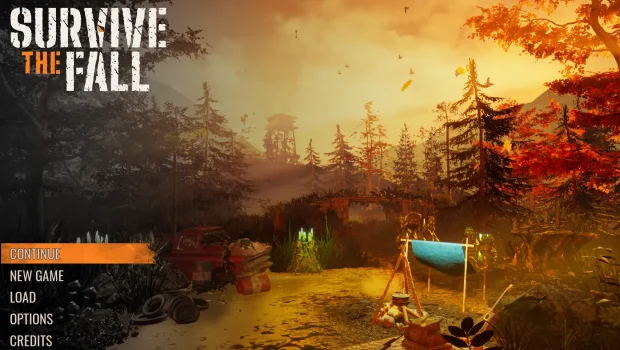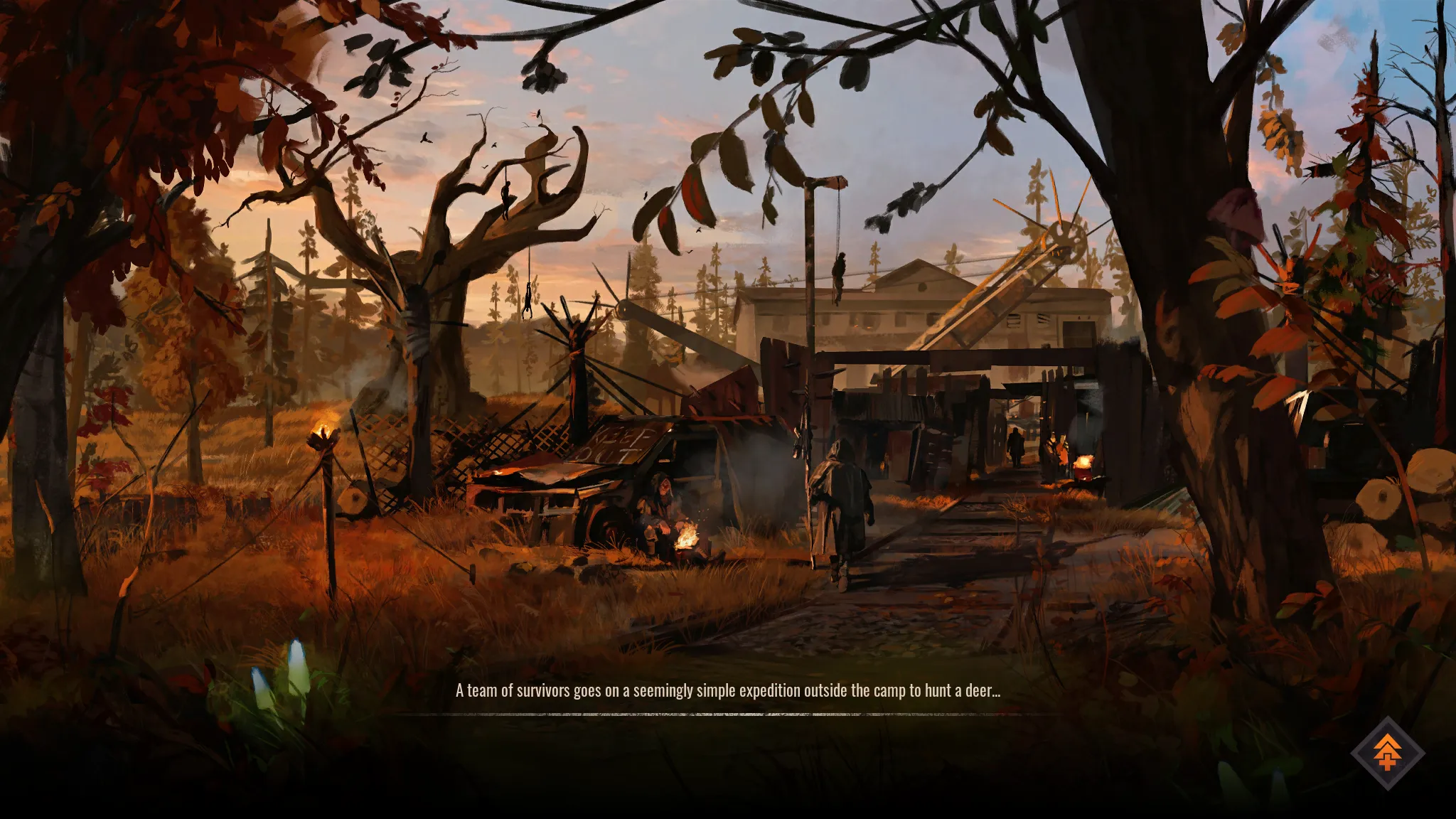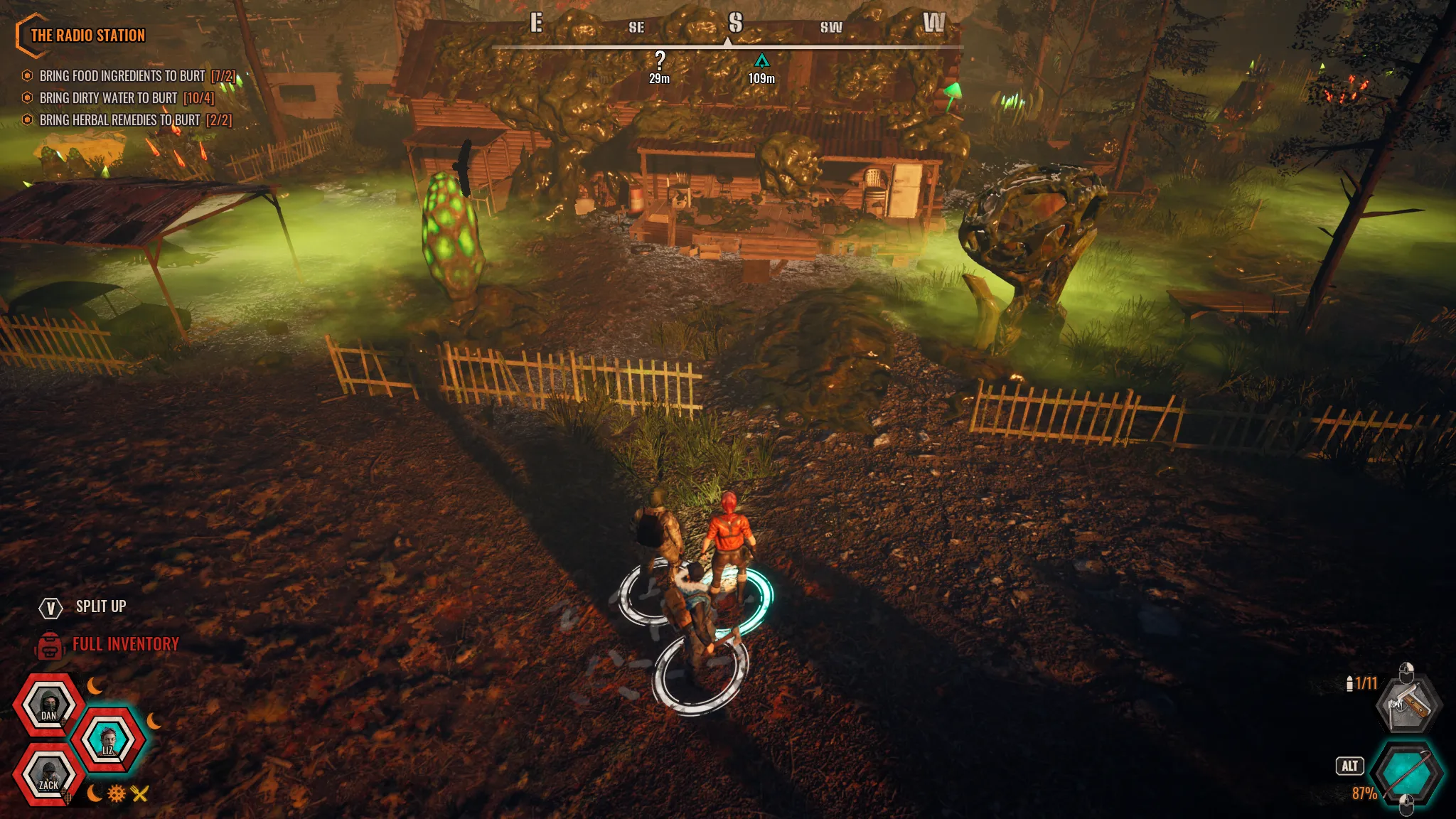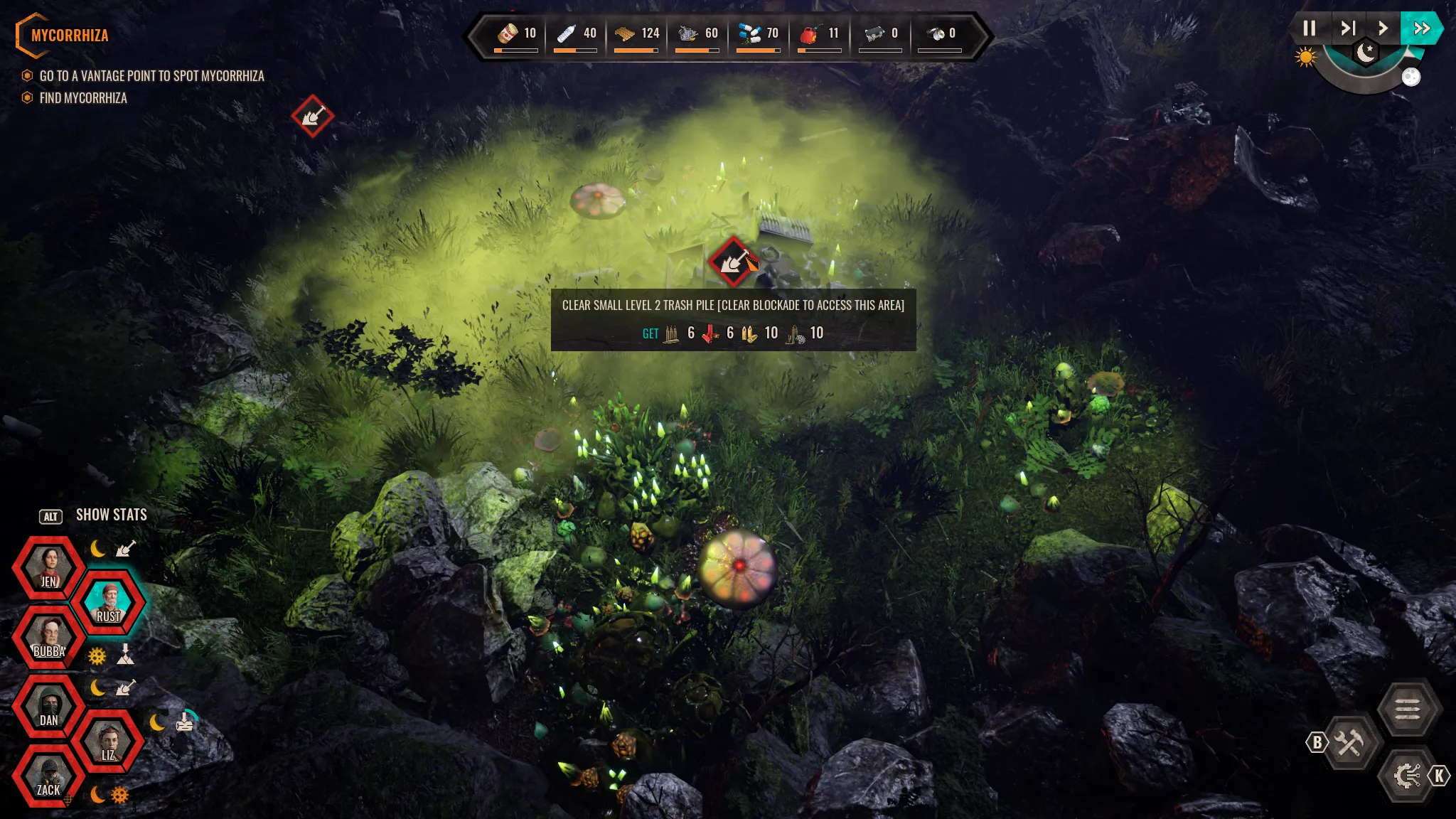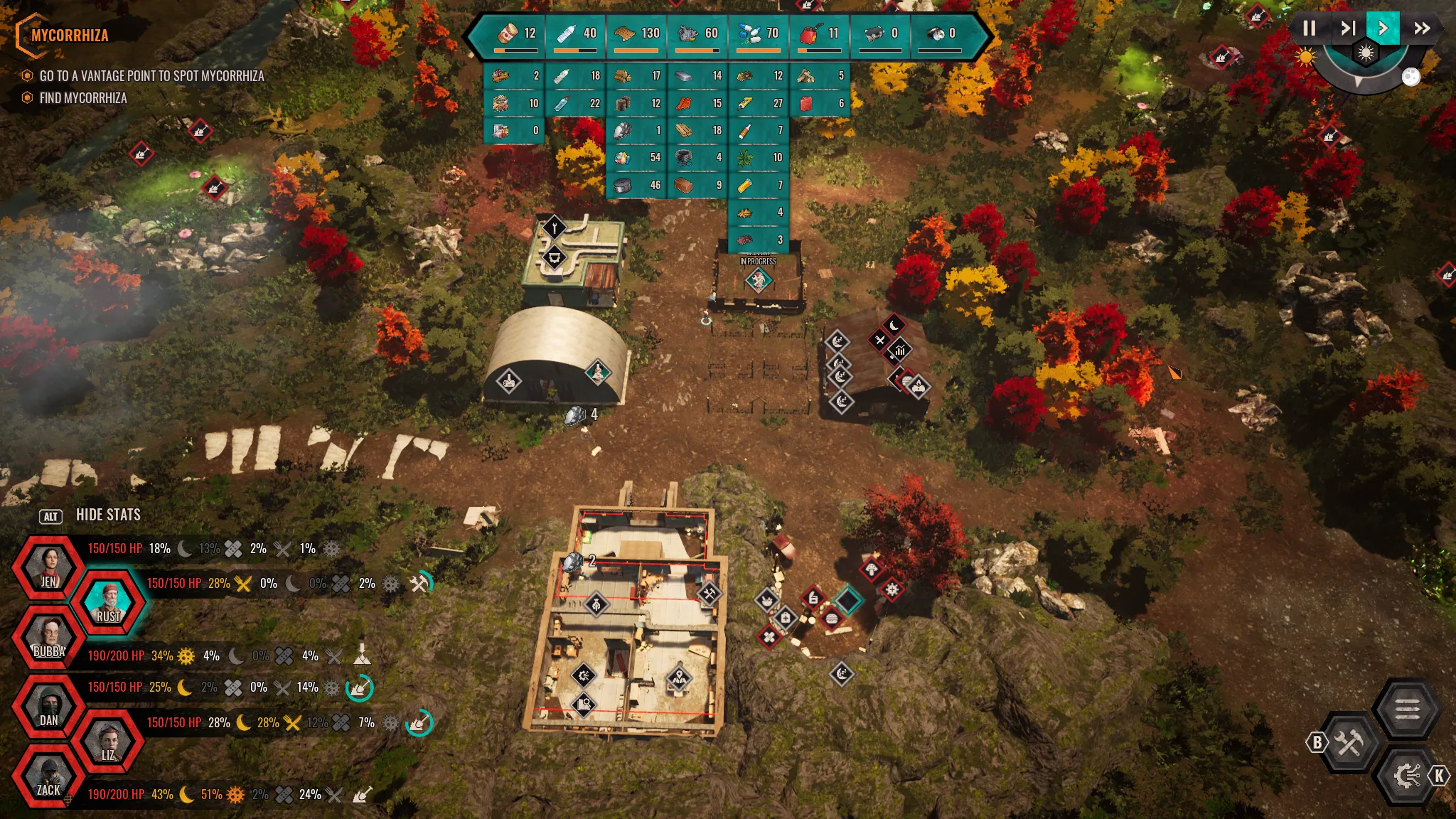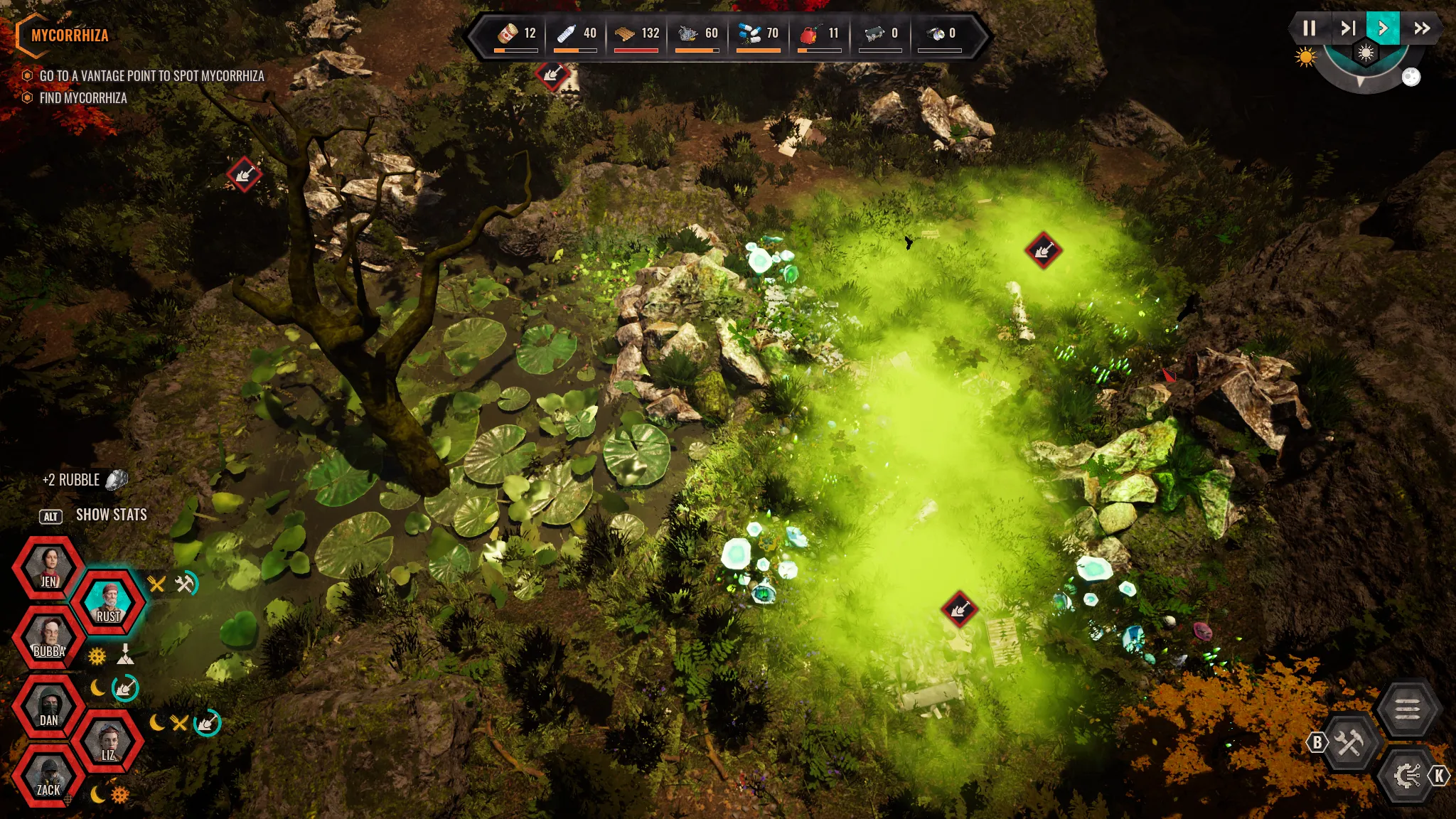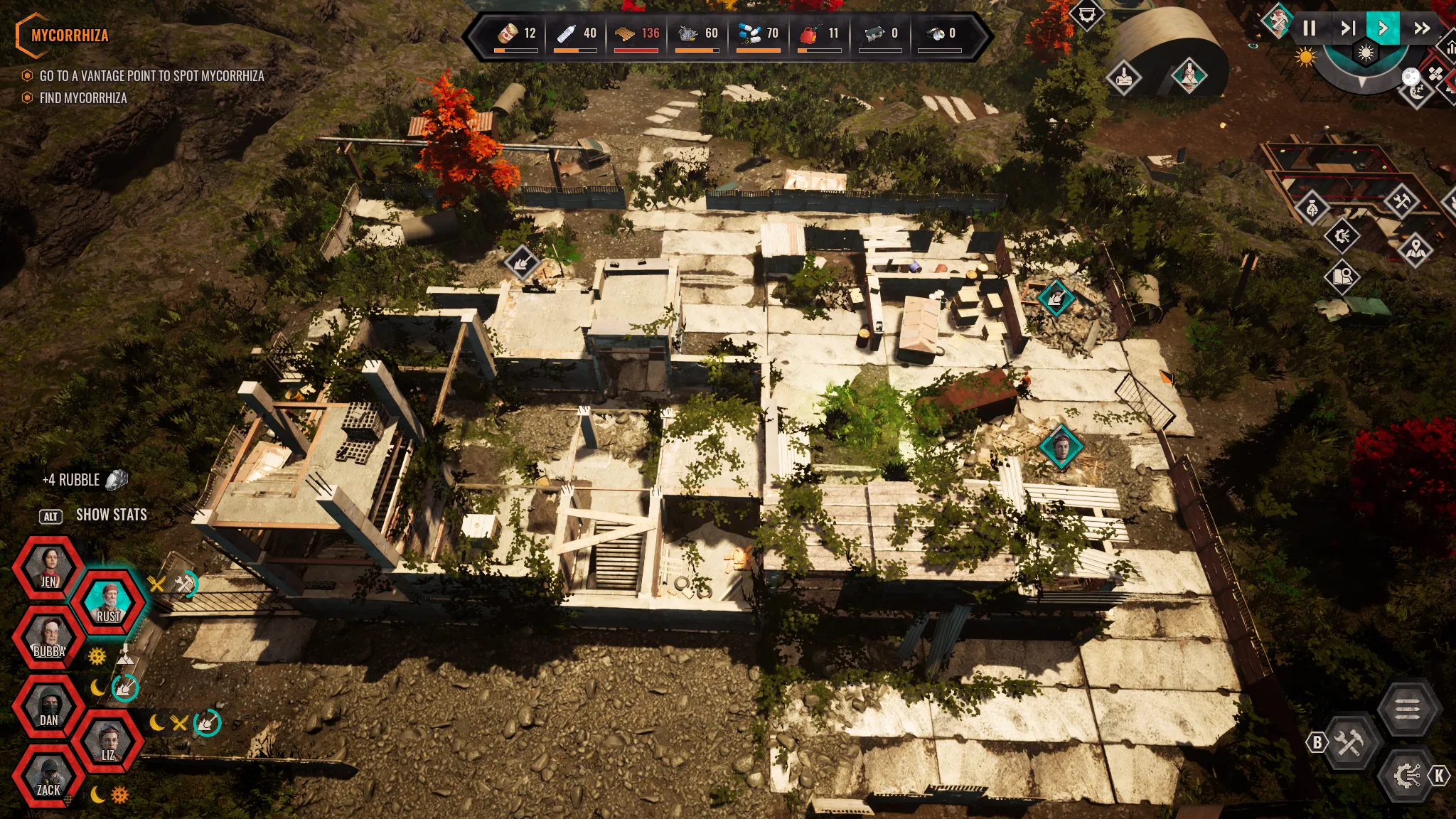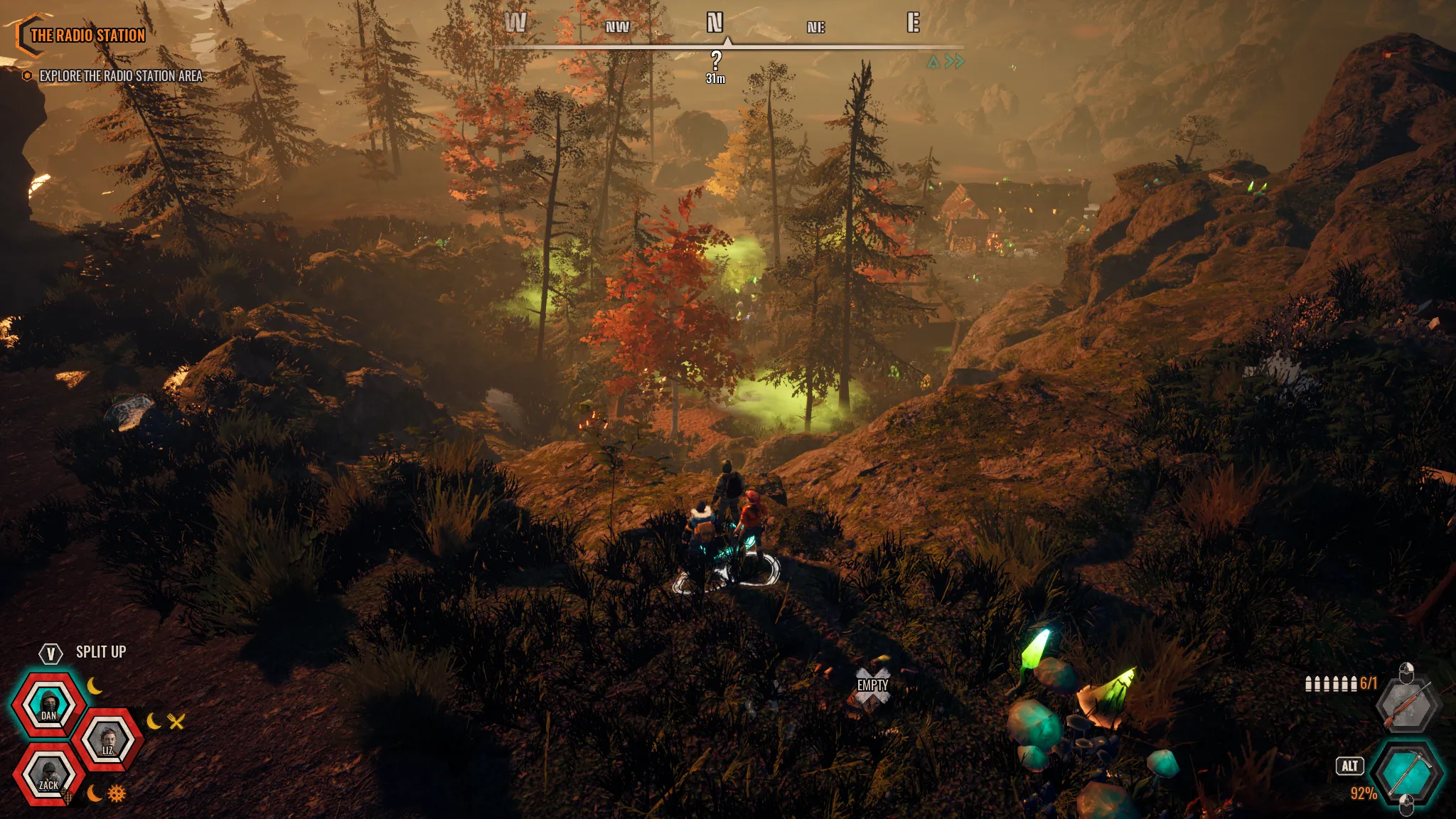Survive the Fall PC Review
Summary: Lovely combination of base builder and tactics, have fun getting lost in a corrupted national park as you scavenge and rebuild
3.8
Autumn Fallout
I think Survive the Fall is the perfect name for this game. It feels like the perfect way to spend too many hours on a chilly autumn day, when you haven’t got a good excuse to do something more important in the garden. I thoroughly enjoyed my time in this post-apocalyptic world despite feeling the story was a bit empty. I think I’ll remember it for the combination of squad tactics mixed with looting and building. Definitely worth checking out, and given how rapidly the developers are updating and patching, worth sticking around for if you get hooked. As usual I’ll avoid any spoilers (none of my screenshots will reveal anything you don’t see in the first hour or so), and all my gameplay was captured on PC. To cover the basics, Survive the Fall was developed by Angry Bulls Studio – I’m not familiar with their previous work, but a quick look on Steam gives me the impression that Survive the Fall utilised the expertise they gained on their previous games regarding gameplay mechanics, building to this recent release.
The setting is fun despite feeling basic, whilst the story feels sufficiently bland that it draws attention to itself. A meteor strike has resulted in the death of most of the human population. There are bandits, looters, and NPCs belong to different factions that you juggle for approval (for the upgrades of course). “Stasis” has spread since the meteor strike resulting in a mushroom-like mutated enemy providing the obligatory ‘corrupted’ enemies. The American wilderness that you explore seems stuck in a permanent autumn – I loved this context because it was beautiful on screen, a lovely contrast to Fallout’s greys and browns, especially if you have the hardware to run it at max settings. I felt the basic story helped me create my own story when I was going through base management gameplay and ignoring the quests on my expeditions… but I also found I struggled to connect with the game’s personality when the story was gently yet firmly forced on me.
The gameplay loops of Survive the Fall reminded me of the old Sim-games I played as a kid. Maybe I was primed to consider this after reviewing Two Point Museum –they are oddly similar. In both you are responsible for managing a balance between expeditions to gather resources whilst balanced against your team members frailty and needs – and then spending your time and resources wisely at your base, building and upgrading. The stakes are a little higher in Survive the Fall – in between expeditions you are managing your shelter, healing your survivors of their stasis exposure, ensuring basic needs related to food and sleep are met. The expedition gameplay is an interesting blend of isometric ARPG with squad-based tactics. I found most of my fun by ignoring the quests, and painstakingly exploring the world, trying to cram as much loot into the very limited team inventory as I could each expedition.
Each character has a characteristic task they excel at it. I think this is meant to encourage deeper decision making and careful time management. I never felt the differences were that significant that I had to be careful except at higher difficulties. But it did help to differentiate the characters in the early-game, when everyone felt the same except for their portrait and voice. Management of your shelter’s ‘settlers’ is gently introduced early-game with a relatively simple menu that lets you automate how characters respond to different needs like hunger – whilst still giving you the option to micromanage. I found a blend of both suited me well – although I feel the UI could do with some finesse. There is an easy option to display all the stats you would need to make deep decisions… but it leaves you with a screen that feels like a whiteboard explanation for a gameplay screenshot.
Expeditions presented themselves to me as a combination of tense action mixed with tedious button holding. As is usual for ARPGs, you are left-clicking to move and melee, and right-clicking to complete range attacks. Combat is fast-paced, and whilst your team members are tougher than the average bear injuries come with significant penalties that can cut your exploration short. There is a pause mechanic that allows you to line up individual members of your team for a squad-like tactics experience with actions that are easy to queue before you unleash violence. I didn’t find combat particularly challenging until I trialled the harder difficulties – but given how small your team’s carrying capacity is, and how many expeditions I needed to repeat just to collect the right resource, the balance between combat and base building is probably just right if you consider the inventory limit as part of the challenge.
Gathering resources was one of the slower aspects to gameplay. It’s lovely that you can send off two of your three team-mates to collect some resources independently. But it was painful to have to stop what I was doing to hold down a button for an interactable object, again and again and again. I found myself struggling between “loot all” and the miniscule storage capacity on expeditions, and I did not enjoy micromanaging resources whilst on expeditions. It was more fun to give up on collecting the specific resource I needed – and rather I would journey around the world, eliminate enemies that might trouble me in a future round, before returning to base and building what I could. Keep an eye on this though, because during my time with Survive the Fall there were 3 significant patches released – Angry Bull seem devoted to supporting the game and connecting with the community.
The gameplay is supported strongly by the world’s autumnal aesthetic. The loop would have become too repetitive but I was busy watching the falling leaves from orange trees or staring at the glow of stasis mushrooms. I think Survive the Fall could benefit from optimisation – the opening cutscene was a staggery mess until I tweaked with the graphic settings with my RTX 4060. Once you figure out the settings that work for you I think you’ll enjoy a smooth ochre and burnt umber experience. I loved that each character and interaction was fully voice-acted, although the voices themselves reminded me of the character selection screens from CRPGs. And regarding bugs – I didn’t experience a single one. I can’t remember the last time that happened, it’s kind of amazing.
In the best possible way, it reminds me of a mobile game (I genuinely mean that as a compliment). I never felt I was tied to my PC, able to balance being a parent to young children whilst coming back to expeditions without losing progress. Transitioning between the expedition biomes and the base building domain is as easy as a mouse click – this helped take the sting out of the annoying inventory, but more importantly it let me play however I felt like. When I got bored of trying to build as much as I could in the limited daylight – I went on a journey; when I got frustrated of swapping loot, I returned to base and experimented with new buildings. And this is how I felt empowered to play my own way despite the story guidance.
If you are keen to play around with a post-apocalyptic semi-sandbox colony simulator with some real-time action gameplay, I would strongly recommend giving Survive the Fall some of your time. I reckon you’ll have most of your base finished before you realise how crazy you’ve driven your family by complaining about the puny inventory.


